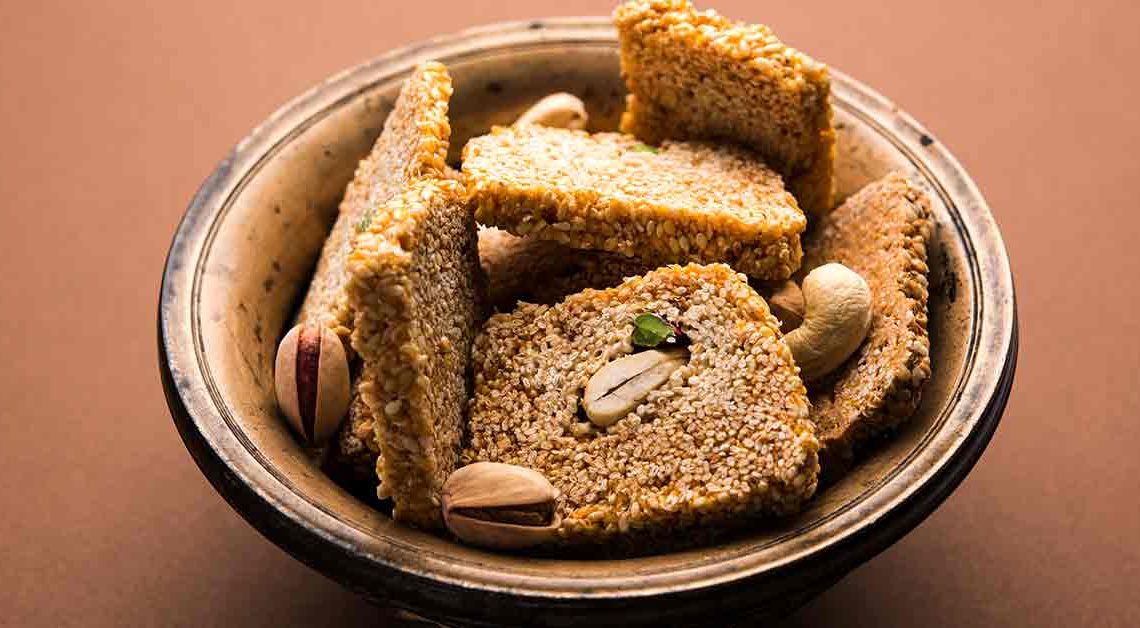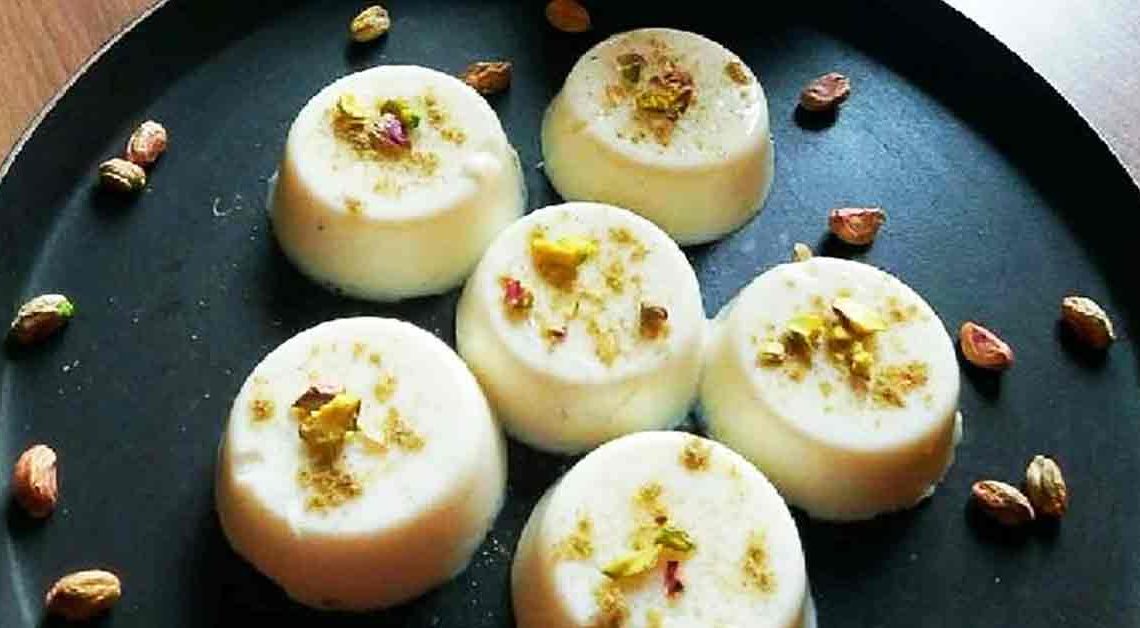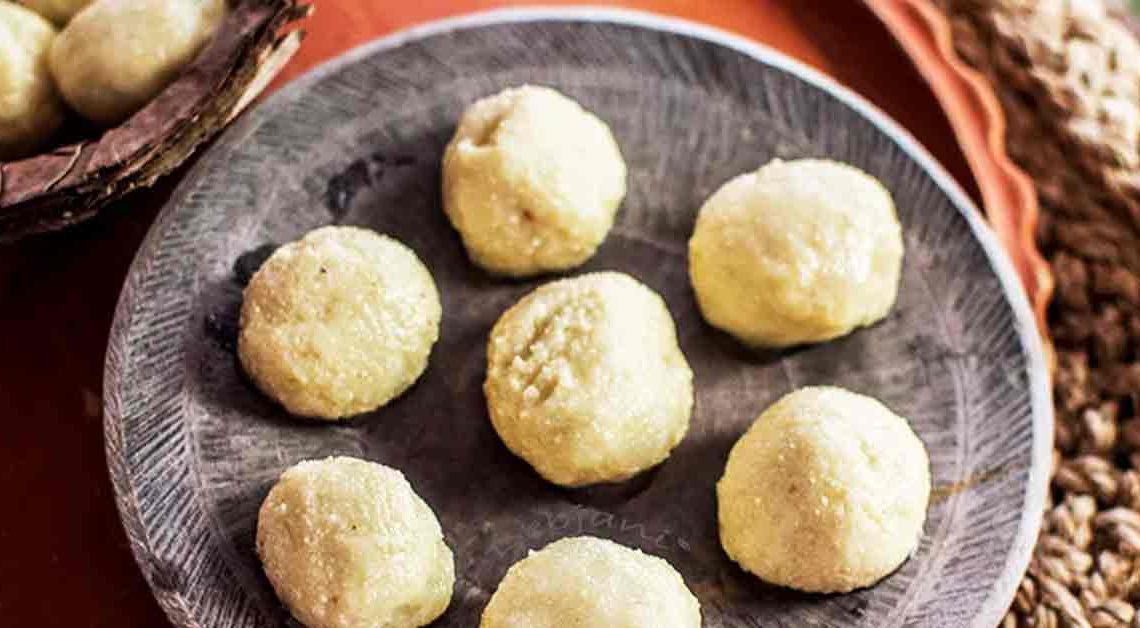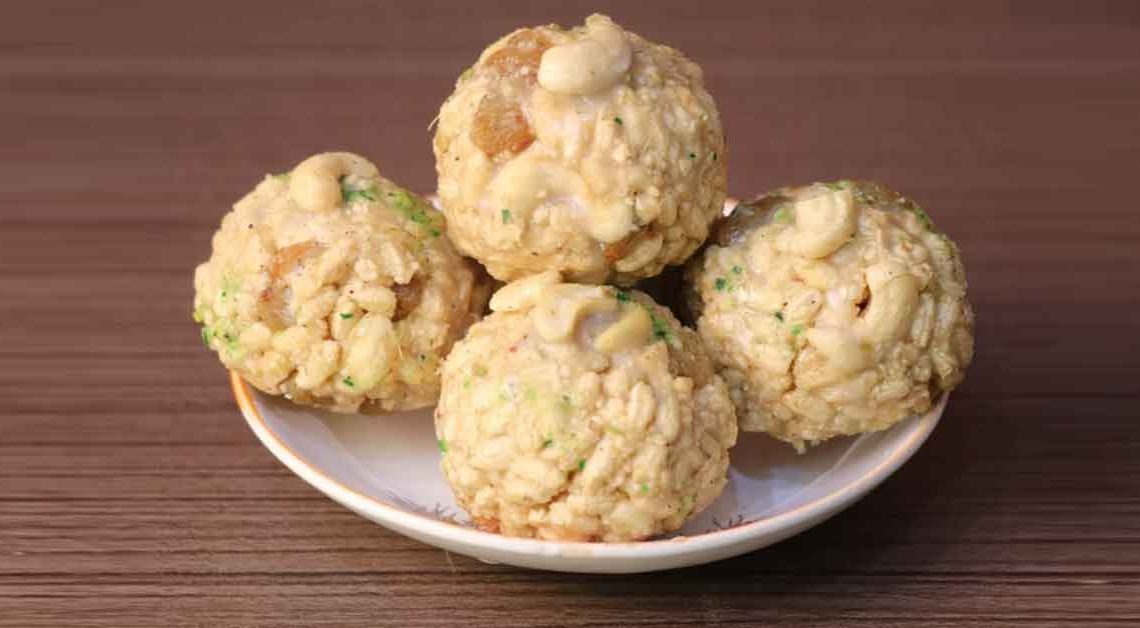Sweet Harvest: Makar Sankranti Delights with Til Papdi

Welcome to a culinary journey on Mithainama that promises to tantalize your taste buds and transport you to the heart of Indian flavors. Today, we embark on a delightful exploration of a traditional treat that not only epitomizes the rich tapestry of Indian sweets but also embodies the artistry of simplicity – Til Papdi.
As the sweet aroma of jaggery and sesame seeds fills the air, we invite you to join us in uncovering the secrets behind this sweet confection. Originating from the vibrant kitchens of India, it is a timeless creation that has stood the test of time, making its way into households during festive occasions and joyous celebrations.
Picture this: golden-brown sesame seeds delicately encased in a sweet, velvety embrace of jaggery. The mere mention of Til Papdi invokes memories of laughter-laden gatherings and the warmth of familial bonds. But what makes this treat truly special? Is it the dance of textures on your palate or the symphony of flavors that play on your taste buds?
Let’s unlock the secrets of Til Papdi together and savor the sweet tales it has to tell.
Origin of Til Papdi
The origin traces back to the rich culinary heritage of India, where traditional sweets hold a significant place in the hearts of people. Also known as Til Chikki or Sesame Brittle, this delightful treat has deep-rooted connections with Indian festivals, particularly Makar Sankranti.
Makar Sankranti, a harvest festival celebrated in various parts of India, marks the transition of the sun into the zodiac sign of Capricorn. It is during this auspicious time it takes center stage in households across the country. The use of sesame seeds is not only symbolic of the winter harvest but also reflects the belief in the seed’s nutritional and warming properties.
The process of making it is a culinary tradition passed down through generations. The combination of roasted sesame seeds and jaggery, a natural sweetener derived from concentrated sugarcane juice, showcases the simplicity and authenticity of Indian sweets. Families come together to prepare sweet as a symbol of good luck and prosperity, sharing the joy of the season with loved ones.
History of Til Papdi
The history is deeply intertwined with the cultural and culinary evolution of India. This traditional sweet treat has a heritage that spans centuries, reflecting the ingenuity of Indian culinary traditions.
Sesame seeds, known as “til” in Hindi, have been cultivated in India for thousands of years. These tiny, nutrient-rich seeds have held a special place in Indian cuisine and are revered for their health benefits. The combination of sesame seeds with jaggery, a natural sweetener, forms the foundation of dessert.
The art of making has been passed down through generations, preserving the authenticity of the recipe. While the ingredients remain simple, the cultural significance and the sense of tradition associated with it continue to make it a cherished part of Indian festivals and celebrations. As families come together to prepare and share this delightful treat, they not only indulge in a sweet confection but also partake in a culinary journey through India’s rich history.
Cultural Significance
Til Papdi holds a profound cultural significance in the tapestry of Indian traditions, and its presence is particularly pronounced during festivals like Makar Sankranti. This sweet delicacy is not merely a treat for the taste buds; it is laden with cultural symbolism and carries deep meanings in various aspects of Indian society:
Harvest Celebration: Makar Sankranti marks the end of the winter solstice and the onset of longer days, signifying the harvest season. Til Papdi and til revri made with sesame seeds, is a symbolic representation of the winter crops and the abundance of the harvest.
Auspicious Ingredients: Sesame seeds, the primary component are considered auspicious in Hindu culture. In traditional practices, sesame seeds are offered during religious ceremonies and rituals. The use of jaggery, a natural sweetener, adds another layer of significance, as it represents the sweetness and prosperity that families wish to embrace during the festive season.
Sun Worship: Makar Sankranti is associated with the movement of the sun into the northern hemisphere. The sun is considered a symbol of life and prosperity in many cultures. Offering it during this time is a way of acknowledging the importance of the sun in agricultural cycles and expressing gratitude for the sustenance it provides.
Where is Til Papdi Famous?
It is particularly famous and cherished in various regions of India, especially during festivals like Makar Sankranti. While it is prepared and enjoyed in many households across the country, there are certain regions where it holds a special place and is renowned for its unique variations and cultural significance. Here are a few regions where it is particularly famous:
Western India: In states like Gujarat and Maharashtra, it is an integral part of the Makar Sankranti festivities. Known as Til Chikki in Maharashtra, it is prepared with roasted sesame seeds and jaggery, forming a crunchy and sweet brittle that is enjoyed by people of all ages.
Northern India: In states like Uttar Pradesh, Bihar, and Punjab, it is a popular traditional sweet during Makar Sankranti. The use of locally sourced ingredients and regional variations adds to the diversity of preparations in these areas.
Eastern India: In West Bengal and Odisha, where Makar Sankranti is celebrated as Poush Sankranti, sesame-based sweets are also popular. While the specific sweet preparations may vary, the use of sesame seeds remains a common theme in festive culinary traditions.
Interesting Facts and Trivia
Til Papdi, with its rich history and cultural significance, brings together the flavors of tradition and the warmth of festivities, making it a delightful and meaningful part of Indian culinary heritage.
- Jaggery, a key sweetening agent in Til Papdi, is a natural source of iron. Consuming this sweet treat can contribute to meeting your daily iron requirements, aiding in the prevention of anemia.
- Sesame seeds are rich in nutrients, including healthy fats, protein, and various minerals. They are believed to have warming properties, making it a popular choice during the winter months.
- In Indian culture, sesame seeds are associated with prosperity and fertility. Offering sesame-based sweets during festivals is considered auspicious and a gesture of goodwill.
- The use of jaggery adds sweetness and depth to the flavor. Jaggery is a traditional sweetener made by concentrating sugarcane juice, and its production is an art in itself.
- Jaggery is known for its digestive properties. It stimulates the digestive enzymes, promoting a healthy gut. Including it can be a tasty way to support your digestive system.
Did You Know?
Til Papdi, a cherished delight during Indian festivals, is not just a treat for your taste buds but also a nutritional powerhouse. Here’s a fascinating fact: consuming Til Papdi comes with a myriad of health benefits!
- Sesame seeds, the star ingredient of Til Papdi, are packed with essential nutrients like iron, calcium, magnesium, and zinc. Indulging in this sweet treat offers a wholesome dose of these vital minerals.
- Sesame seeds are a great source of polyunsaturated and monounsaturated fats, which contribute to heart health. Including it in moderation can be a tasty way to incorporate these beneficial fats into your diet.
- The combination of sesame seeds and jaggery provides a quick energy boost, making it an ideal snack during festivals or as a pick-me-up during the day.
- Sesame seeds are loaded with antioxidants, including sesamol and sesamin. These compounds help combat oxidative stress in the body, contributing to overall well-being.
- The calcium content in sesame seeds supports bone health. Including it in your diet can be a delicious way to fortify your bones and prevent conditions like osteoporosis.







